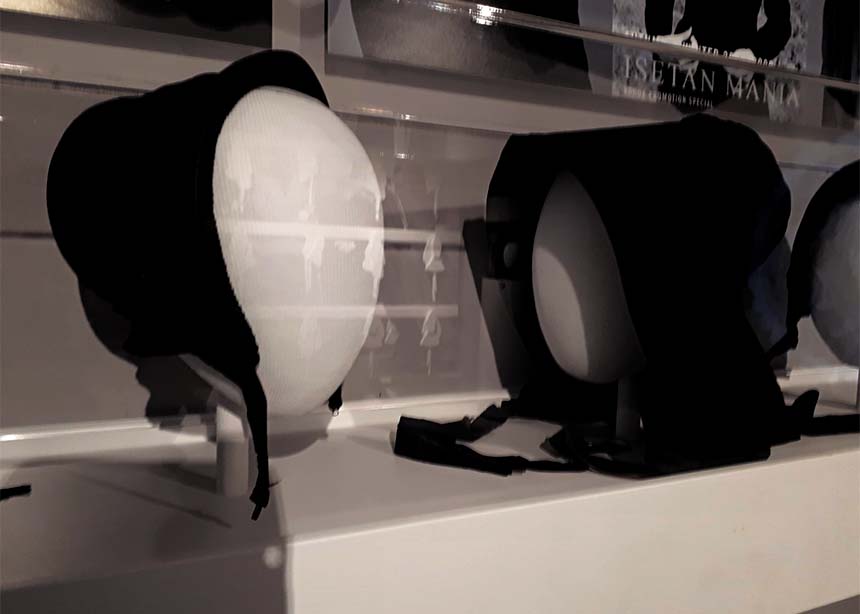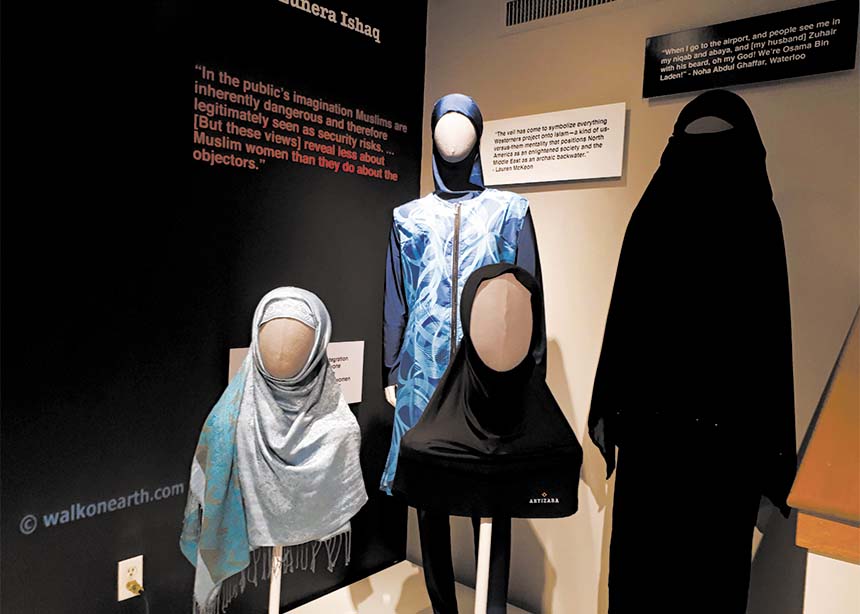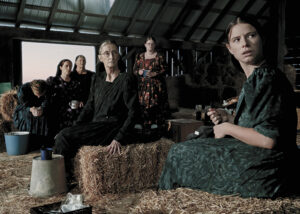The vast majority of North American Mennonite and Muslim women do not wear any sort of veil or head covering. Why then do head coverings receive so much public attention? Do Muslim head coverings and Mennonite bonnets provoke the same response?
An exhibit called “Un/Coverings: Mennonite & Muslim Women’s Heads and Hearts,” now on display until April at Schneider Haus National Historic Site, in Kitchener, Ont., explores these questions.
One part of the exhibit is dedicated to showing a variety of bonnets and head coverings worn by Mennonite women. In another room, Muslim women’s clothing and veils are on display.
A lecture given at Conrad Grebel University College in Waterloo, Ont., by Laura Morlock, is also featured in the exhibit. Morlock teaches dress and diversity at Ryerson University’s School of Fashion in Toronto. As a scholar of religious dress, she explores gender narratives and identity construction.
Over time and among different groups Mennonite women’s head coverings were intended to serve the same function: modesty, conformity to the church and separation from society, based on teachings in I Corinthians 11:3-15.
But ironies abound, as the exhibit points out. There are different standards of dress for men than for women and, while head coverings symbolize non-conformity to society, they are a symbol of conformity within the group, even though there is diversity between Mennonite groups when it comes to the style of head coverings!
In the exhibit, stereotypes and assumptions in North American society about head coverings worn by Muslim women are addressed.
According to Linda B. Arthur, a dress scholar who is quoted in the exhibit, “Symbols operate beneath the conscious level,” but it can be difficult to articulate them verbally. Head coverings have caricatured Muslims, and served to “collapse a group of people into one identity,” and project onto Islam an anti-woman stereotype, while “lifting the veil” has been seen as “a metaphor for freedom and democracy.”
For many people, Muslim head coverings imply they are foreigners or outsiders, creating an “us versus them” mentality. “Un/Coverings” turns these and other stereotypes on their head.
The display reflects that, in reality, Muslim women “represent so much variation and contrast within and beyond their communities. Their stories and identities are as complex and creative as the clothes they wear.” There are a billion Muslims in the world with diverse styles of dress; “modest chic” fashion spans the globe. In Canada, 84 percent of Muslim women do not wear a hijab, and fewer than 200 women wear the niqab.
Muslim women are “social actors,” according to the display. They employ, create, reform and change their societies. A “static colonial image of the oppressed, veiled Muslim woman offers sharp contrast with their lived experience.”
This article appears in the Jan. 10, 2022 print issue, with the headline “Turning dress stereotypes on their head.”









Leave a Reply
You must be logged in to post a comment.